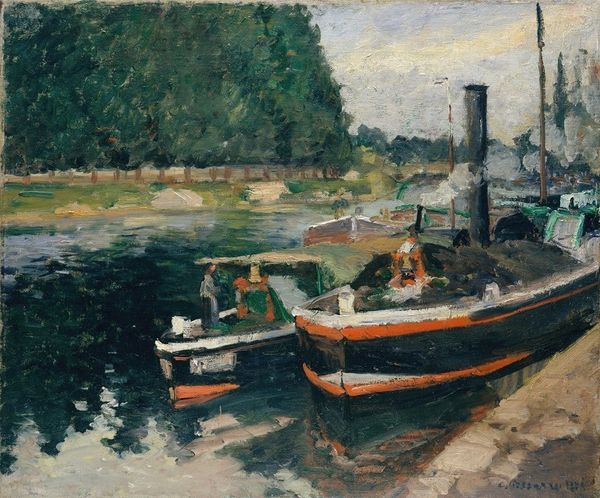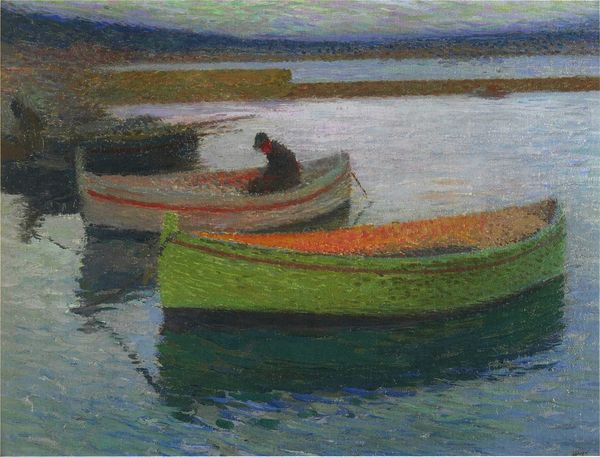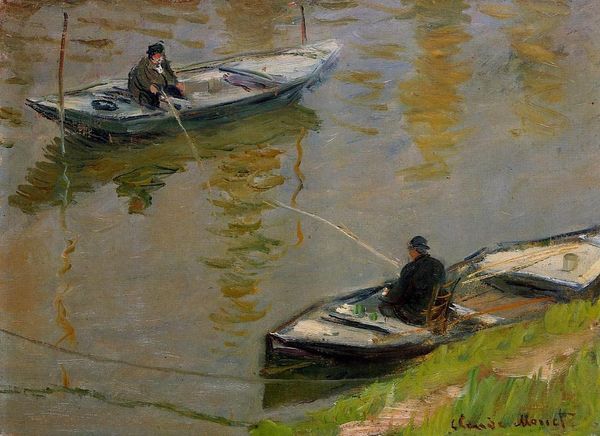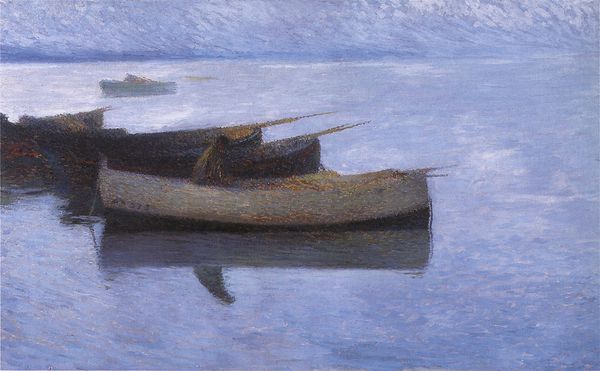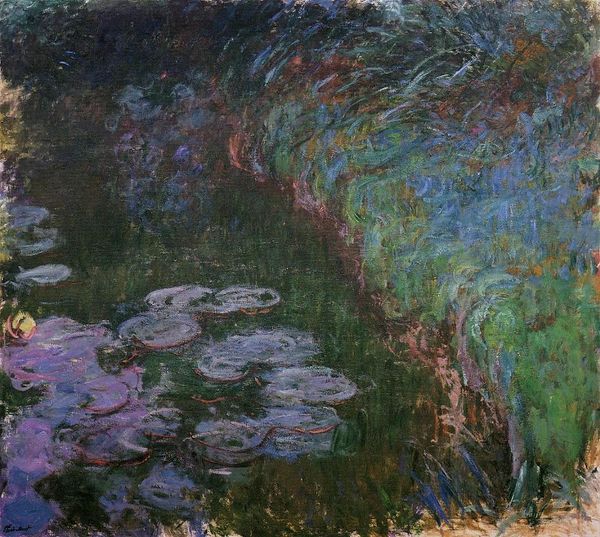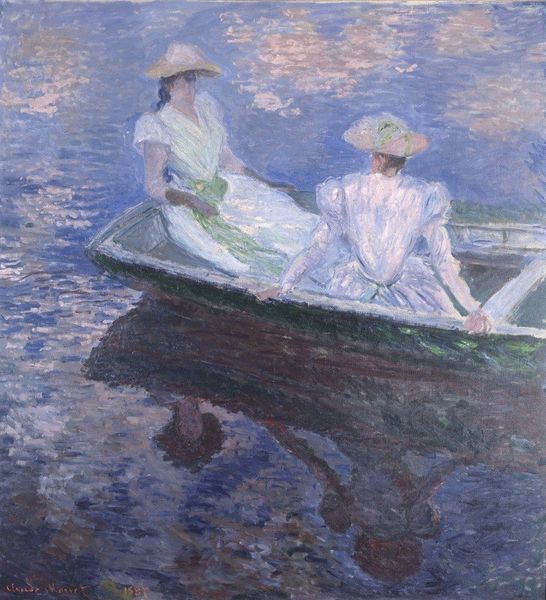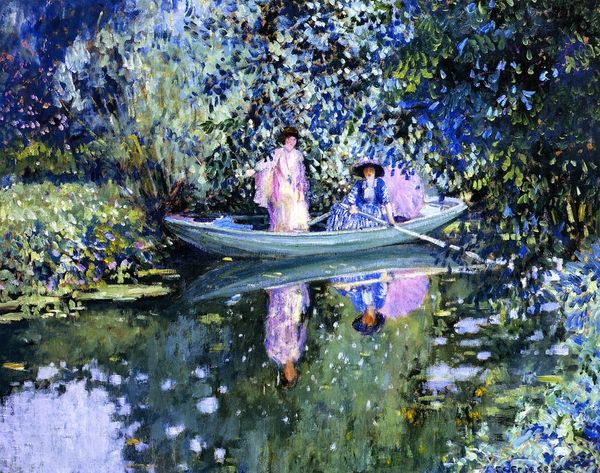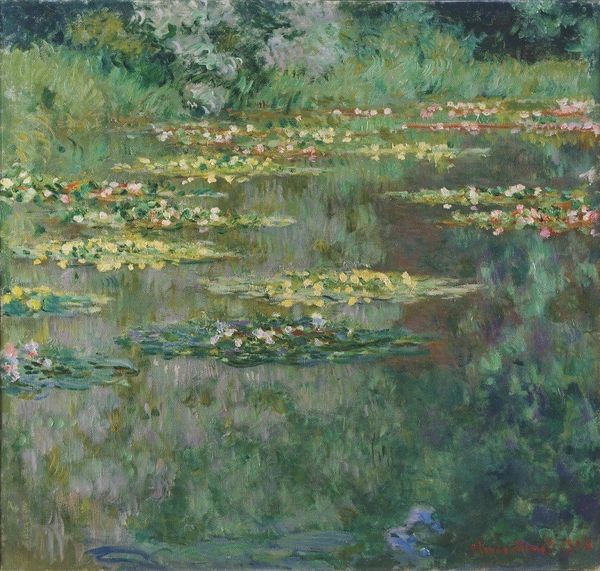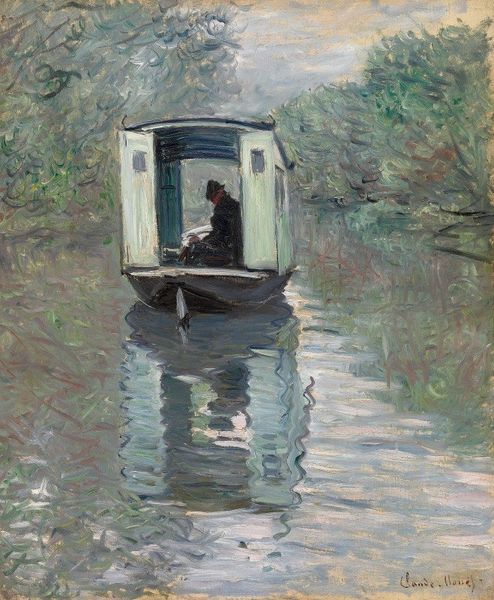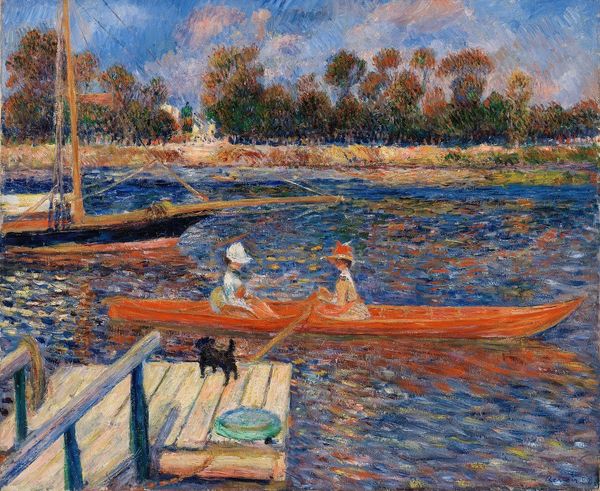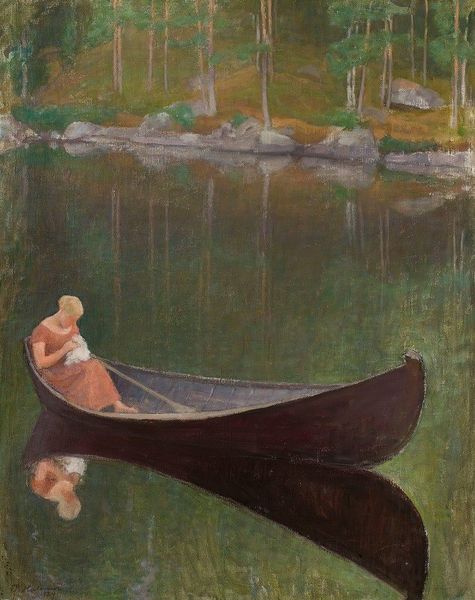
Copyright: Public Domain: Artvee
Editor: This is "Repose at Noonday" by Frederick Carl Frieseke, painted around 1911. It’s an oil painting that depicts two women by a boat in a lush, green landscape. I’m immediately struck by how idyllic and tranquil the scene feels. What do you see in this piece? Curator: I see a work deeply embedded in the complexities of representing women in the early 20th century. While seemingly capturing a scene of leisure, the painting also participates in broader discourses around femininity, nature, and the male gaze. How do the women's passive poses strike you, particularly within the context of Impressionism and its engagement with modern life? Editor: Well, I hadn't really thought about it like that. Their stillness does seem a little at odds with the vibrant, almost chaotic brushstrokes around them. Does that suggest a commentary on women's roles being confined even within spaces of leisure? Curator: Precisely! Frieseke, while influenced by Impressionism's aesthetic, often depicted women in ways that reinforced societal expectations of passivity and beauty. Think about the symbolism of the parasol, or the woman trailing her fingers in the water: How might these details reinforce or subvert expectations around class and leisure for women of this era? And to what extent can we consider that this piece reflects the societal limitations of its time? Editor: That’s a really interesting point. I guess I was initially drawn to the beautiful colors and the overall impression of a peaceful summer day, without really questioning the underlying message. Curator: It's important to remember that even seemingly 'beautiful' images can be carriers of complex social and political meanings. Understanding the context helps us to critically engage with art and its role in shaping perceptions. Editor: Definitely. I’ll look at paintings in a completely new way now! Thanks. Curator: Likewise. Considering those intersections makes art history a relevant lens through which we can see both the past and the present.
Comments
No comments
Be the first to comment and join the conversation on the ultimate creative platform.
